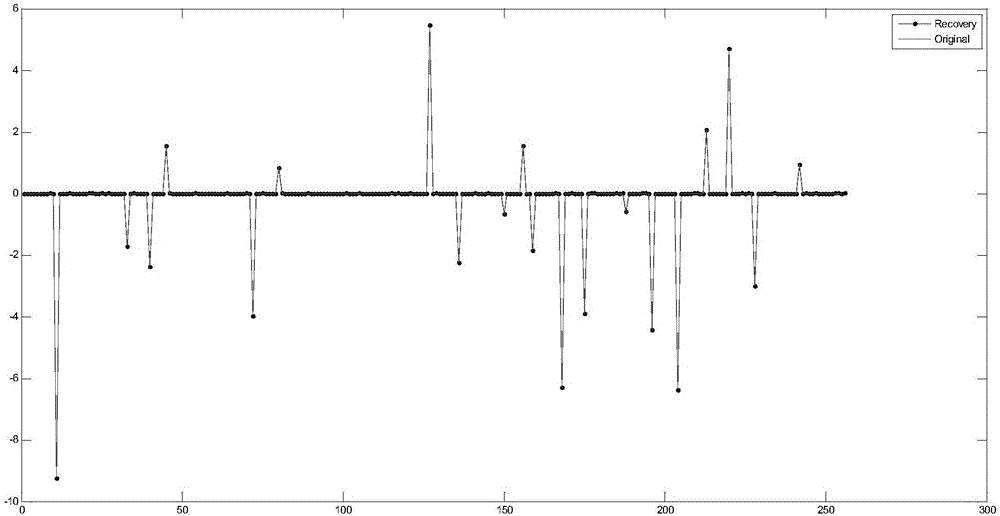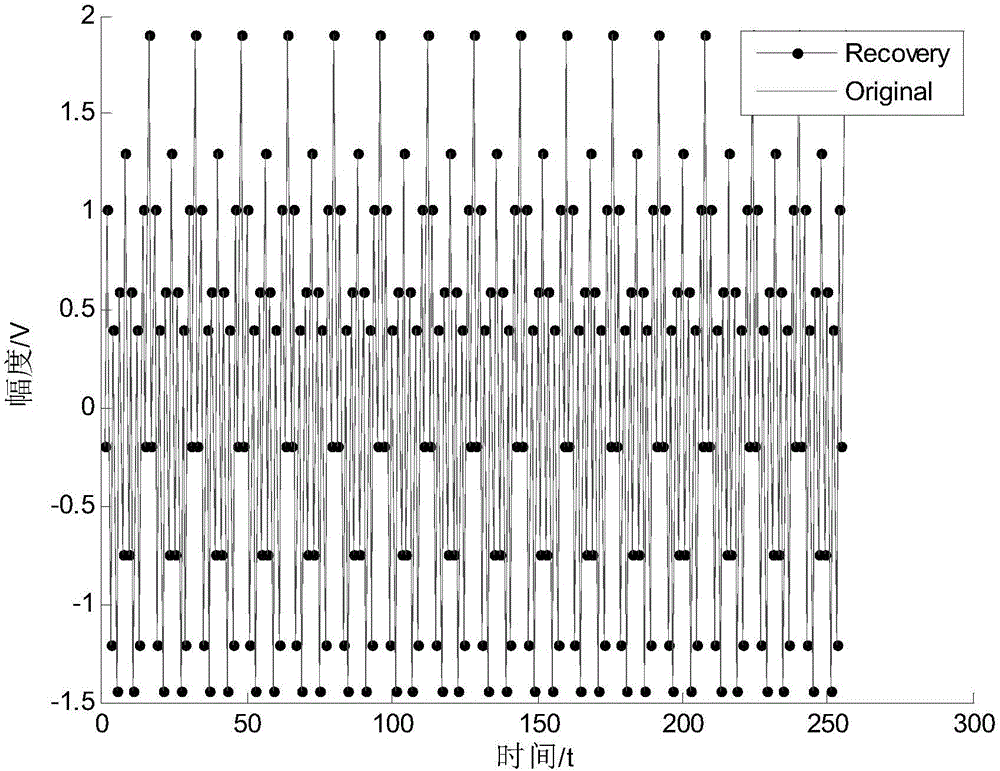Generalized ROMP (Regularized Orthogonal Matching Pursuit) method for reconstructing radar signals
An orthogonal matching tracking and radar signal technology, which is applied to radio wave measurement systems, instruments, etc., can solve the problems of slow iterative convergence and low precision of radar signal data recovery, and achieve fast iterative convergence, short calculation time, and high precision effect
- Summary
- Abstract
- Description
- Claims
- Application Information
AI Technical Summary
Problems solved by technology
Method used
Image
Examples
specific Embodiment approach 1
[0023] Specific implementation mode 1: The specific process of a generalized regularized orthogonal matching and tracking method for reconstructing radar signals in this implementation mode is as follows:
[0024] Step 1. Initialize the matrix composed of the residual error of the radar signal to be reconstructed, the iterative index set, and the column vector corresponding to the index, and obtain the initial value of the matrix composed of the residual error of the radar signal to be reconstructed, the iterative index set, and the column vector corresponding to the index ;
[0025] Step 2. Calculate the inner product of the recovery matrix A of the radar signal to be reconstructed and the initial value of the residual of the radar signal to be reconstructed, and select the atom J according to the regularization standard 0 ;
[0026] Step 3. From atom J 0 Take the first S maximum values to form the corresponding set J 0 ’; according to the set J 0 'Select the correspond...
specific Embodiment approach 2
[0032] Specific embodiment 2: The difference between this embodiment and specific embodiment 1 is that in the step 1, the residual error of the radar signal to be reconstructed, the iterative index set, and the matrix composed of the column vector corresponding to the index are respectively initialized to obtain the to-be-reconstructed The initial value of the matrix composed of the residual of the radar signal, the iterative index set, and the column vector corresponding to the index; the specific process is:
[0033] Initialize the residual r of the radar signal to be reconstructed 0 =y, iterative index set of the radar signal to be reconstructed The index of the radar signal to be reconstructed corresponds to a matrix composed of column vectors t=0;
[0034] Set the residual error of the radar signal to be reconstructed for t iterations as r t , the index (column number) set of the radar signal to be reconstructed in t iterations is Λ t , t represents the number of it...
specific Embodiment approach 3
[0042] Specific embodiment three: the difference between this embodiment and specific embodiment one or two is: the inner product of the restoration matrix A of the radar signal to be reconstructed and the residual initial value of the radar signal to be reconstructed is calculated in the second step, according to The regularization criterion selects the atom J 0 ; The specific process is:
[0043] Calculate the inner product of the recovery matrix A of the radar signal to be reconstructed and the initial value of the residual, u=abs[A T r t-1 ], i.e. compute t - 1 ,a j >
[0044] Select the first K maximum values or all non-zero values in u (if the number of non-zero values is less than K), these values correspond to the column number j of the recovery matrix A to form a set J (column number set), in the set J according to the regularization Standard Select Atom J 0 , to meet the requirements: |u(i)|≤2|u(j)|, i,j∈J 0 , select the atom J that satisfies the requi...
PUM
 Login to View More
Login to View More Abstract
Description
Claims
Application Information
 Login to View More
Login to View More - R&D
- Intellectual Property
- Life Sciences
- Materials
- Tech Scout
- Unparalleled Data Quality
- Higher Quality Content
- 60% Fewer Hallucinations
Browse by: Latest US Patents, China's latest patents, Technical Efficacy Thesaurus, Application Domain, Technology Topic, Popular Technical Reports.
© 2025 PatSnap. All rights reserved.Legal|Privacy policy|Modern Slavery Act Transparency Statement|Sitemap|About US| Contact US: help@patsnap.com



